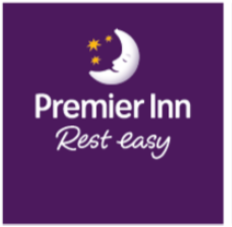Author
What protection does a trade mark really give a company?
This is a question we are often asked.
As with most legal questions, there are several answers.
The first answer is slightly obvious – having a trade mark is better than not having one because the common law right of “passing off” can be difficult to enforce without good evidence.
The next answer is that a registered trade mark gives you a great deal of protection BUT there are limits.
This article explains where those limits lie by reference to the case of easyGroup Limited -v- Premier Inn Hotels Limited.
Detail
For trade mark lawyers, the thud of a letter of claim from easyGroup is a rite of passage. So aggressive is the company that any use of the word “easy” as part of a brand or in marketing material is met by a claim for trade mark infringement.
easyGroup has got to adopt this strategy because the word “easy” – being a common English word – is inherently descriptive. Therefore, in order to maintain its position that “easy” is recognised by members of the public as a brand which has acquired distinctiveness as representing goods and services that emanate from the easyGroup, the company is forced to take on all comers.
And so it was when Premier Inn launched its “rest easy” branding.
easyGroup objected to this use by Premier Inn and launched its trade mark claim based on its hero brand and its sub-brand “easyHotel”.
However, in an interesting turn of fate, easyGroup added a further claim for infringement following its acquisition of the trade mark “Rest Easy Apartments”. Pausing there for a moment, brand owners defending an infringement case can equally torpedo the claims by the acquisition of better and/or earlier rights when an assertion is made against them. While here the acquisition was designed to bolster easyGroup’s claims, for the reasons set out below, this tactic, as well as the rest of the claim, was unsuccessful.
The next answer to what protection a trade mark gives you comes by reference to the claim not pursued by easyGroup. Given easyGroup did not own a trade mark identical to the sign used by Premier Inn, there was no “double identity” trade mark infringement claim. A double identity claim will stop a competitor using exactly the same sign for exactly the same goods and services as the registered mark. This is a powerful right and ensures that trade mark owners have strong protection for their primary brand in respect of their most important products which are covered by the trade mark specification.
However, without a double identity claim, easyGroup needed to show that Premier Inn’s use of “rest easy” either:
- caused the “average consumer” to be confused; or
- took advantage of the reputation easyGroup had established in its trade marks; or
- was detrimental to the reputation easyGroup had established in its trade marks.
Even then there are defences to consider which consider whether Premier Inn’s use was with “due cause” and “in accordance with honest practices“.
Therefore, it is the application of these tests which provides the final answers to the question of what are the limits to the protection afforded when you register a brand a trade mark.
Applying the trade mark infringement tests
Trade mark infringement is determined by a judge conducting a comparison of the trade mark as registered with the “sign” as used by the defendant. The case then proceeds on the basis of this “mark” for “sign” comparison. The “mark” is simple to identify from the entry on trade mark registry but identifying the “sign” can be more difficult.
What is a “mark” for “sign” comparison?
In many trade mark infringement cases, the “sign” complained about will be obvious.
However, when dealing with ordinary English words, care needs to be taken to identify when a sign is being used as a trade mark. In this case, easyGroup conceded that it was lawful to use the words “rest easy” as a descriptive phrase and the Judge found that such use in Premier Inn’s marketing material was not use “as a trade mark” and was therefore lawful descriptive use.
The question then turned on the use of the “rest easy” words in “lock up” with the overall Premier Inn branding featuring the moon device. The Judge found such common words “rest easy” in easyGroup’s trade marks to have a low degree of distinctiveness. Therefore, when “rest easy” was “locked up” with the Premier Inn branding, the Judge found a low level of similarity between the “mark(s)” and the “sign(s)”.
On the question of confusion, the “average consumer” does not dissect the mark and/or the sign into their constituent elements and look at each separately. In the absence of actual evidence of consumers confusing the mark and the sign, the judge undertook a global, multifactorial assessment based on an “imperfect recollection” of the Premier Inn branding. The judge found that the idiom “rest easy” did not retain an independent, distinctive role within the branding, which is dominated by the words Premier Inn and the moon device and so an average consumer would not be confused.
Was easyGroup’s reputation enough?
Even where there is no confusion between a mark and a sign, the sign can still infringe a trade mark with a reputation.
The Judge held that the many uses easyGroup made of the word “easy” as part of brands like “easyJet” and “easyHotel” meant that there was use of “easy” on its own. However, the Judge did not agree that this meant that easyGroup had acquired enhanced distinctiveness in these registered “easy[Brands]” trade marks for the word “easy” on its own. Further, as easyGroup had expressly stated that it was not going to run a distinctiveness argument based on its “family” of “easy[Brands]” to establish its reputation, it failed to prove that the word “easy” alone had sufficient reputation. As the Judge put it:
“It would logically apply to all of the “easy” brands as they all claim to offer low-cost, no frills service. To hold that a trade mark could obtain reputation and enhanced distinctiveness in particular services because of an association with trade marks sharing some similarity, but registered for and/or trading in different services would be to extend the protection given by trade marks well beyond the protection provided for under statute“.
This left easyGroup with a relatively narrow claim comparing the trade mark “easyHotel” with the “locked up” Premier Inn branding which, while the Judge felt had some similarity, it was not sufficient (in the absence of any evidence from easyGroup) to give rise to a link between the easyHotel mark and the Premier Inn branding. Accordingly, without a link, there could be no trade mark infringement based on the reputation of the easyHotel trade mark.
Conclusion
The case is a great example to show the limits of the statutory protection afforded by the registration of a brand as a trade mark and where the line is drawn permitting lawful descriptive use.
Trade mark protection can stop competitors using the same sign for the goods and services for which a trade mark is registered. It will also stop a competitor causing confusion in the market place or abusing the reputation that a brand owner has built up in the trade mark as registered. However, trade marks cannot stop competitors using ordinary descriptive words and phrases in the normal way that such words would be understood.
Print article



